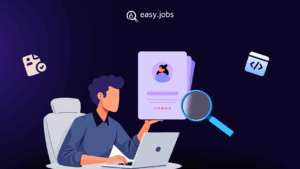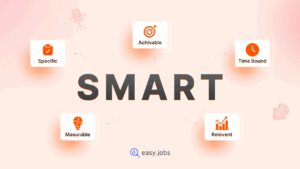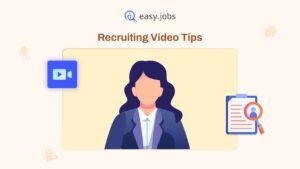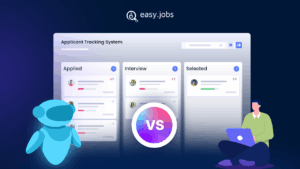Are you a recruiter or employer struggling with your talent acquisition? Well, you are not alone and new to facing recruitment challenges! With the influx of multiple job types and talents with diverse types of skill sets, onboarding the right person for your company can be a tough job. In 2025 and beyond, businesses are facing a number of challenges in attracting and retaining top talent.
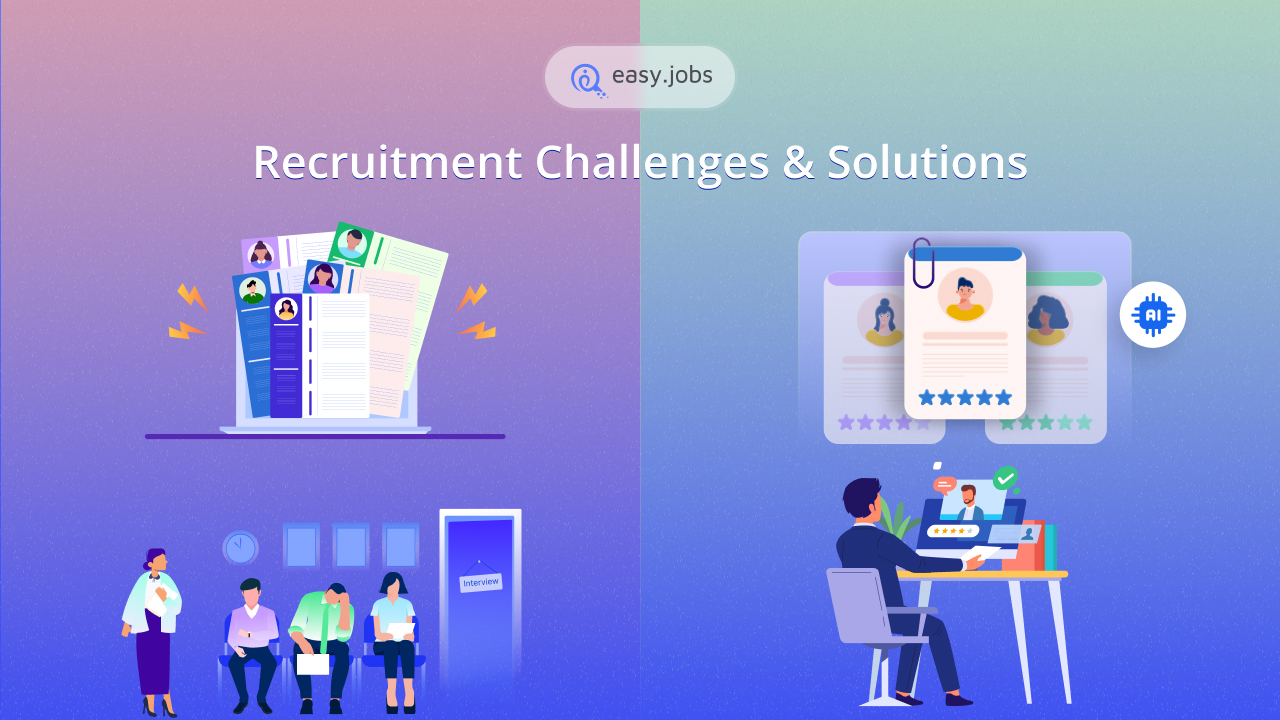
On top of that, the ‘Great Resignation’ continues to reshape the job industry, with employees prioritizing flexibility, work-life balance, and meaningful work. This shift in objectives, along with an increasing skills gap and the rise of the gig economy, has resulted in a difficult employment condition.
But do not worry! We will go over some of the most typical recruitment challenges that businesses face and realistic fixes to get you over them. You can improve hiring procedures, draw in top candidates, and create a productive team for your business by being aware of these recruitment challenges and putting the practical solutions discussed here into practice.
💡 Recruitment Challenges: the Know-How
Recruitment challenges are barriers to a company’s capacity to attract, evaluate, and hire the best candidates for vacant jobs. As an employer, you may experience these at any point of the recruiting process, affecting anything from finding qualified applicants to providing a great candidate experience.
📝 Recruitment Challenges: Key Characteristics
While planning to recruit the perfect employees and onboard them to your team, you might encounter a wide range of difficulties depending on the job types and the company setup you have. These challenges can:
👉 Slow down the recruitment process, making it difficult to fill positions quickly and efficiently. This hampers the growth of a growing company.
👉 Make it harder to attract and retain top talent, leading to the unemployment of less qualified candidates.
👉 Increase the time and resources needed to hire new employees, ultimately impacting the budgets of your company.
📝 Recruitment Challenges: Examples
After having some grasp of the key characteristics, you might want to find solutions to recruitment challenges. But before that, let us take a look at how these difficulties are.
👉 Talent shortage: There simply are not enough qualified candidates available to fill open positions.
👉 Unclear job descriptions: Job descriptions that are poorly written or do not accurately reflect the role can deter qualified candidates.
👉 Inefficient hiring process: A lengthy application process can frustrate candidates and lead to drop-off.
👉 Weak employer brand: A company with a negative reputation will struggle to attract top talent.
🔎 The Recruitment Challenges You Might Face & Tips to Overcome
By understanding and addressing recruitment challenges, companies can improve their hiring process, attract the best talent, and build a strong and successful workforce for consistent growth. Below are some of the most common recruitment challenges with their realistic solutions we have found after thorough research.
📌 Talent Shortage
One of the biggest challenges recruiters are facing today is a scarcity of qualified candidates for open positions. This is due to a number of factors, including:
Skills gap: The tech industry, in particular, is constantly changing, and employers are struggling to find candidates with the necessary skills and experience.
Demographic shifts: The workforce is aging, and there are fewer young people entering the job market.
Remote work: The rise of remote work has created a wider talent market, but it has also made it more difficult for companies to assess and hire qualified candidates.
✅ Solutions to Talent Shortages
Since getting qualified candidates drawn to your job posts and hiring them can be often difficult, you can take the measures mentioned below and overcome these hurdles:
Expand your talent-hunting strategy: You might consider candidates from nontraditional backgrounds and those with transferable skills. Plus, looking for ways to upskill or reskill your existing workforce can be a way.
Embrace remote work: Remote work can be a great way to attract top talent from different regions with similar skills. However, it is important to have a well-defined remote work policy and powerful platforms like easy.jobs to support a remote workforce.
Invest in employer branding: Developing a strong employer brand that showcases your company culture and values is a must. You need to be active on social media platforms where your target candidates are and personalize your outreach efforts.
📌 Candidate Engagement

In a crowded job market, it is more important than ever to stand out from the competition and attract top talent. Here are some of the challenges recruiters face in engaging candidates:
Competition: With so many companies looking for the attention of a limited number of qualified candidates, it can be difficult to get your job postings noticed.
Candidate expectations: Candidates often have high expectations from potential employers. They want to work for companies that offer a competitive salary and benefits package.
✅ Solutions to Recruitment Challenges: Candidate Engagement
While reaching a large number of candidates and getting the qualified ones to apply for your jobs can be challenging, you can follow some basic steps as solutions.
Compelling job descriptions: Consider writing clear, concise, and informative job descriptions with benefits that accurately reflect the position and the company culture.
Personalize your outreach: Just sending generic emails to candidates is not a good idea. You can take the time to personalize your outreach matching the specific candidate’s experience and qualifications.
Respond promptly: Candidates expect to hear back from employers in a timely manner. Set clear expectations about your communication process and stick to them.
📌 Candidate Experience
The candidate experience is the entire journey a candidate takes from the moment they apply for a job to the moment they are hired (or not hired). A positive candidate experience can lead to a number of benefits, including increased employer branding and improved candidate acceptance rates. Below are some challenges regarding this:
Complex application processes: Lengthy application processes can deter qualified candidates from applying for a job.
Lack of communication: Candidates often feel frustrated by a lack of communication from employers during the interview process.
Negative interview experience: A negative interview experience can damage your employer’s brand and make it difficult to attract top talent in the future.
✅ Candidate Experience: Making It Better
Following a few simple to-do’s, you can enhance the experiences of all the applicants for your jobs, make them feel better, and boost employer branding.
Streamline your application process: You can make it easy for candidates to apply for jobs by using online application forms utilizing platforms like easy.jobs and removing unnecessary steps from the process.
Communicate regularly: Keep candidates informed about the status of their application throughout the interview process, even if you do not select a candidate for the job.
Positive interview experience: Train your interviewers to be professional and courteous. Create a positive and welcoming environment for candidates.
📌 Data Overload
Recruiters are generating and collecting more data than ever before. This data can be a valuable asset, but it can also be overwhelming to manage. There can be some recruitment challenges regarding this:
Managing applicant data: Recruiters need to be able to effectively store, organize, and access applicant data.
Using data to inform decisions: Data can be a powerful tool for making informed hiring decisions. However, recruiters need to be able to interpret data correctly and avoid making biased decisions.
✅ Reducing Data Overload Issues
Data overload can be a major pain point in recruitment, especially with the influx of resumes, applications, and candidate information from various sources.
Invest in recruitment technology: Applicant Tracking Systems (ATS) can help you streamline data management, automate tasks, and gain valuable insights into your talent pool.
Develop a data analytics strategy: Determine what data is most important to you and how you can use it to improve your recruiting process.
📌 Bias in Recruitment

Unconscious bias can creep into the recruitment process at any stage, from reviewing resumes to conducting interviews. This can lead to overlooking qualified candidates from diverse backgrounds.
Unconscious bias: Recruiters may be biased against candidates based on factors such as race, gender, age, or disability, even if they are not aware of it.
Lack of diversity: Interview panels that are not diverse are more likely to make biased decisions.
✅ Addressing Bias in Recruitment
By addressing bias in recruitment, you can utilize the process of creating a hiring process that minimizes the influence of personal preferences and prejudices on candidate selection.
Standardized interview processes: Develop a standardized interview process that ensures all candidates are evaluated on the same criteria.
Utilize blind resume reviews: Remove identifying information from resumes before reviewing them to help mitigate bias.
Train hiring managers: Provide training to hiring managers on unconscious bias and how to identify and mitigate it in the recruitment process.
🚀 Building a Strong Recruitment Strategy for 2025
Recruiters face both recruitment challenges and opportunities while hiring new candidates. To overcome these challenges, it is crucial to focus on building a strong employer brand, providing a positive candidate experience, embracing data and technology, and staying informed and adaptable. Also, you may want to develop a strong employer brand to attract qualified candidates and set your organization apart from competitors.
Embrace async communication as a valuable tool for enhancing collaboration and achieving your team’s goals. If you have found this blog helpful, share your opinion with our Facebook community. You can subscribe to our blogs for valuable tutorials, guides, knowledge, tips, and the latest recruitment updates.

